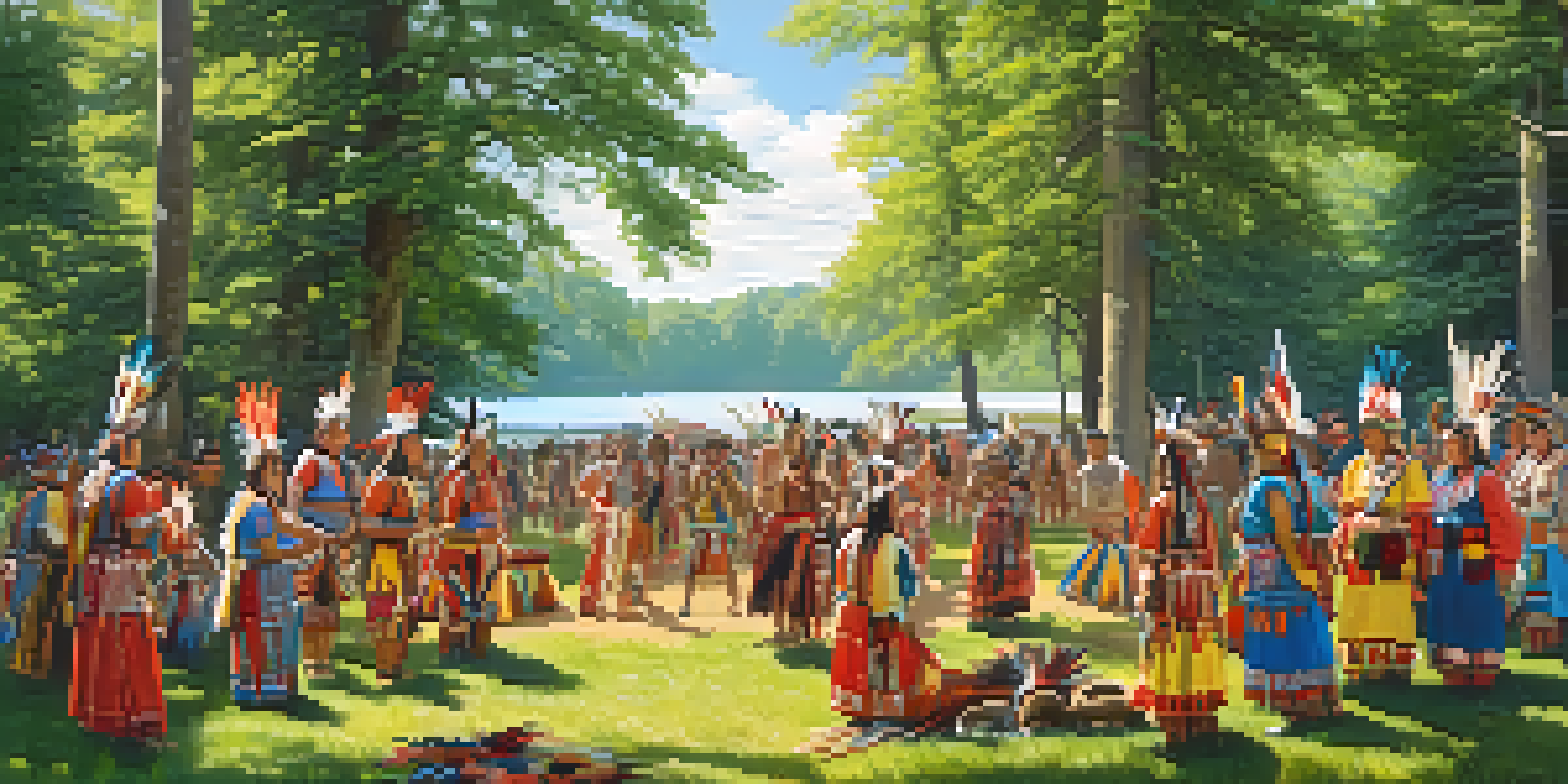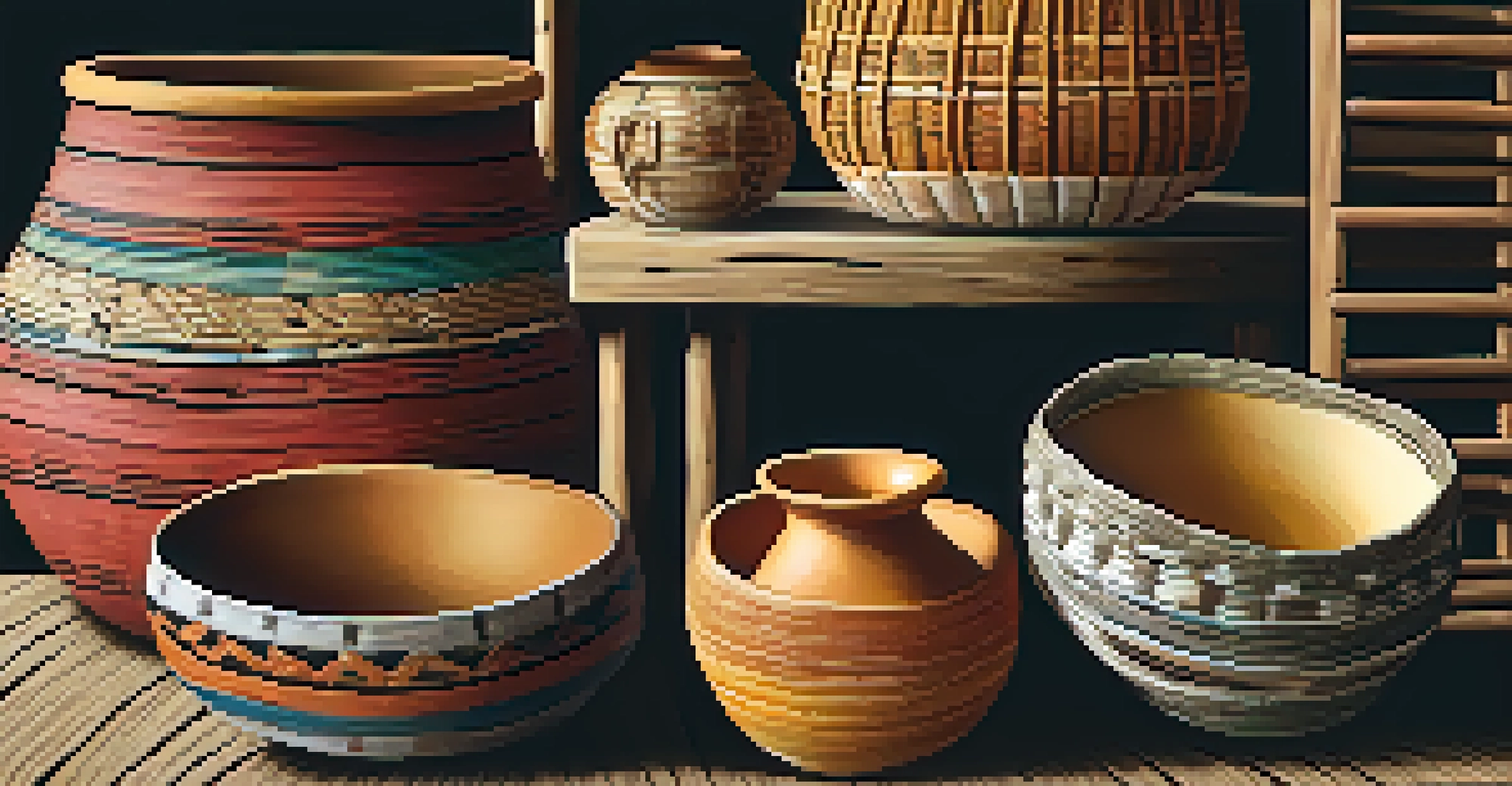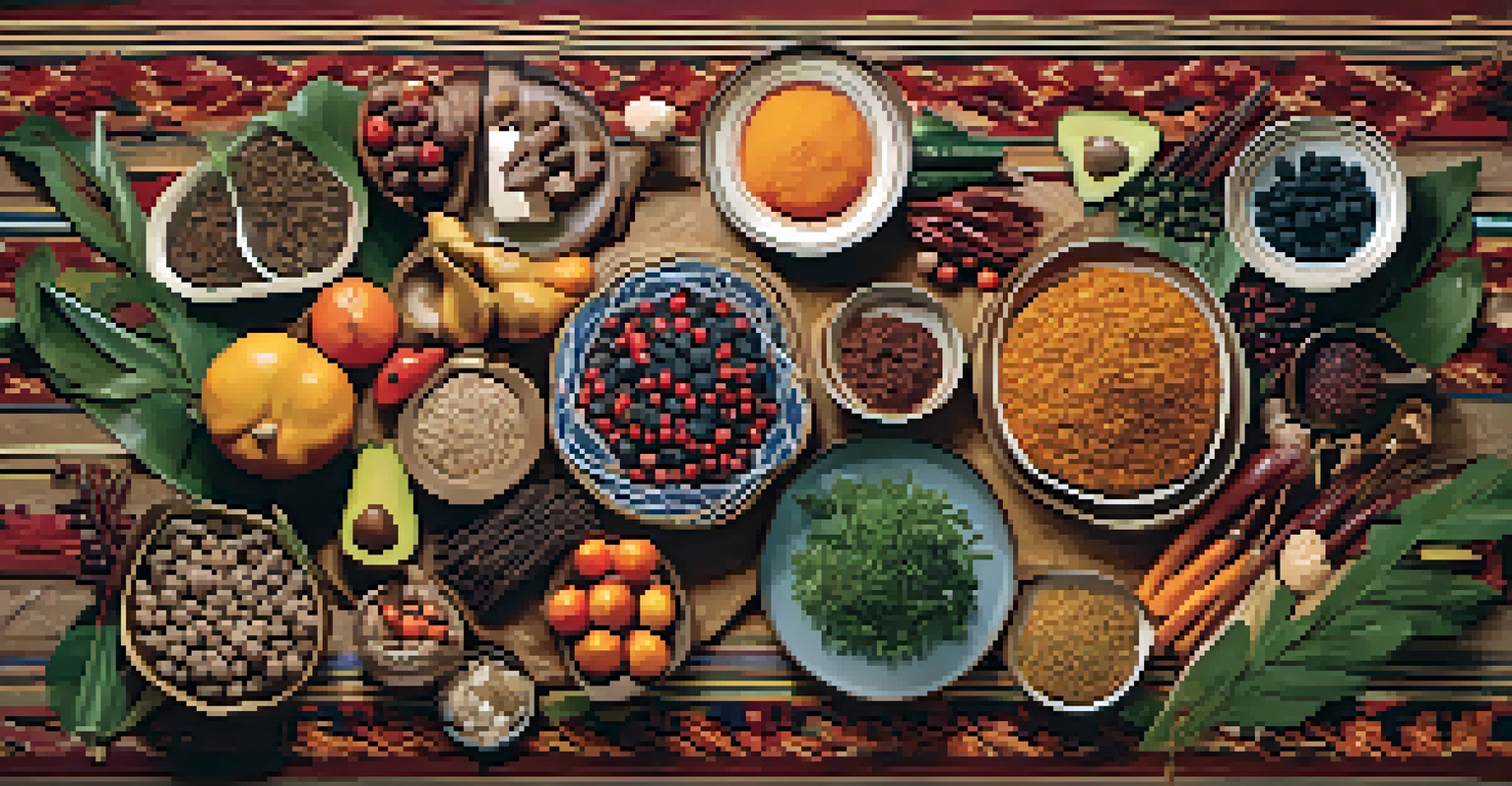Celebrating Illinois' Indigenous Cultures and Traditions

A Glimpse into Illinois' Indigenous History
Illinois is home to a rich tapestry of Indigenous cultures that date back thousands of years. The state's Indigenous peoples, including the Peoria, Kickapoo, and Potawatomi, have deep-rooted histories that contribute to the cultural mosaic of the region. Understanding this history is crucial, as it helps us appreciate the traditions and values still present today.
The preservation of our language is the preservation of our identity.
These communities have faced significant challenges over the centuries, including displacement and cultural erasure. However, many tribes have worked tirelessly to preserve their heritage and share their stories. By acknowledging this history, we can foster a greater respect for the living cultures that continue to thrive in Illinois.
Celebrating Indigenous history is not just about recognizing the past; it’s about honoring the resilience and contributions of these communities. Engaging with their stories allows us to appreciate the depth and richness of their cultures, making it a vital part of Illinois' identity.
Traditional Arts and Crafts: A Cultural Legacy
The Indigenous peoples of Illinois have a rich tradition of arts and crafts that reflect their cultural identity and connection to the land. From intricate beadwork to vibrant pottery, these art forms are not just beautiful; they tell stories and convey the values of the community. These crafts are often passed down through generations, embodying the skills and traditions of their ancestors.

For example, the art of weaving and creating baskets from natural materials is not only a practical skill but also a way to connect with cultural heritage. Each piece often carries symbolic meaning, representing spiritual beliefs or historical events. By engaging with these art forms, we can gain insight into the worldviews and lifestyles of Indigenous peoples.
Rich Indigenous Heritage in Illinois
Illinois is home to diverse Indigenous cultures that have a profound historical significance and contemporary relevance.
Today, many Indigenous artists in Illinois continue to innovate while honoring traditional methods. Their work not only preserves cultural heritage but also contributes to the contemporary art scene, showcasing the enduring spirit of these communities. Celebrating their artistry is essential in recognizing the ongoing narrative of Indigenous cultures.
Traditional Foods: Nourishment and Culture
Food plays a central role in Indigenous cultures, serving as a source of nourishment and a way to connect with community and tradition. In Illinois, many Indigenous peoples continue to practice traditional farming and hunting methods, cultivating a deep respect for the land. Seasonal foods like wild rice, game, and various berries are often featured in their diets, reflecting a sustainable relationship with nature.
Storytelling is the most powerful way to put ideas into the world today.
Gathering for meals is more than just eating; it's about sharing stories and fostering community bonds. Many traditional dishes are prepared for special ceremonies, highlighting the importance of food in cultural practices. This communal aspect emphasizes the connection between food and identity, as it brings families and communities together.
In recent years, there has been a resurgence of interest in Indigenous food sovereignty, with many seeking to reconnect with traditional food practices. This movement not only promotes health and well-being but also revitalizes cultural traditions. Celebrating these culinary practices allows us to appreciate the rich flavors and histories that Indigenous foods offer.
Ceremonies and Celebrations: Honoring Traditions
Ceremonies are vital expressions of Indigenous cultures, serving as opportunities to honor ancestors, celebrate community, and renew spiritual connections. In Illinois, various ceremonies reflect the diverse traditions of its Indigenous peoples, from powwows to seasonal festivals. These gatherings often include music, dance, and storytelling, fostering a sense of unity and cultural pride.
Each ceremony carries profound significance, often tied to the cycles of nature or community milestones. For instance, harvest celebrations may focus on gratitude for the land's bounty, while other ceremonies might emphasize healing or remembrance. By participating in or observing these events, we can gain insights into the values and beliefs that shape these communities.
Cultural Traditions Through Art
Traditional arts and crafts of Indigenous peoples reflect their identities and stories, showcasing a deep connection to their heritage.
In addition to preserving traditions, these celebrations also serve as a bridge to educate others about Indigenous cultures. Engaging with these ceremonies fosters mutual understanding and respect, allowing all participants to share in the richness of these traditions. Celebrating Indigenous ceremonies enriches our collective cultural landscape.
Storytelling: The Heart of Indigenous Cultures
Storytelling is a fundamental aspect of Indigenous cultures, serving as a means of passing down history, values, and life lessons. In Illinois, oral traditions are rich and varied, with each community having its unique tales that reflect their experiences and worldview. These stories often feature elements of nature, animals, and the cosmos, emphasizing the interconnectedness of all life.
Through storytelling, knowledge is shared and cultural identity is preserved. Elders play a crucial role in this practice, imparting wisdom and guidance to younger generations. This intergenerational exchange not only strengthens community bonds but also ensures that traditions remain vibrant and relevant.
Today, many Indigenous storytellers are finding new platforms to share their narratives, from literature to digital media. This evolution allows them to reach wider audiences while maintaining the essence of their cultural heritage. Celebrating storytelling ensures that these rich narratives continue to inspire and educate future generations.
Language Revitalization: A Key to Cultural Preservation
Language is a vital component of cultural identity, and many Indigenous communities in Illinois are actively working to revitalize their languages. With the decline of native speakers, initiatives have emerged to teach and promote Indigenous languages in schools and community settings. This effort is crucial, as language encapsulates unique ways of thinking and understanding the world.
Revitalization programs often incorporate traditional stories, songs, and everyday conversations, making learning engaging and relevant. By fostering a love for their languages, communities can empower younger generations to connect with their heritage. This not only strengthens cultural identity but also enhances community pride.
Modern Voices Shape Indigenous Culture
Contemporary Indigenous artists and activists blend tradition with innovation, redefining cultural expression and advocating for social justice.
Moreover, as language is reclaimed, it opens up avenues for deeper understanding of traditions and values. Celebrating language revitalization efforts highlights the importance of preserving these vital aspects of Indigenous cultures, ensuring they thrive for years to come. Through these initiatives, the voices of Indigenous peoples continue to resonate powerfully in Illinois and beyond.
Modern Indigenous Voices: Bridging Tradition and Innovation
As we celebrate Indigenous cultures in Illinois, it's essential to recognize the modern voices that are shaping these communities today. Many Indigenous individuals blend traditional practices with contemporary influences, creating a dynamic cultural landscape. From artists to activists, these voices are redefining what it means to be Indigenous in the modern world.
For instance, Indigenous musicians and filmmakers are using their platforms to share their stories and advocate for social justice. By addressing contemporary issues through a cultural lens, they create a space for dialogue and understanding. This blend of tradition and innovation not only preserves heritage but also ensures its relevance in today's society.

Engaging with modern Indigenous voices allows us to appreciate the ongoing evolution of these cultures. Celebrating their contributions empowers these communities and fosters a deeper connection to their rich history. By supporting Indigenous creators, we can help amplify their messages and celebrate their cultural resilience.